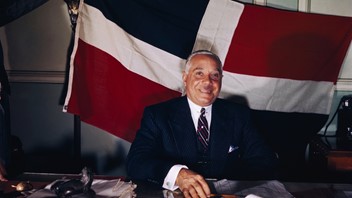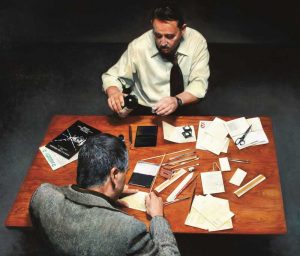Rafael Leónidas Trujillo ruled the Dominican Republic for over thirty years, from 1930 until his assassination in 1961. But how did he control society for three long decades? He had control over the army, over the expression of opinion, and over the national economy. Trujillo, despite being 39 years old when he took power, had a hunger for young women as much as twenty years younger than himself. Trujillo was known as a “machista,” which is someone who has a “strong sense of masculine pride.” He believed women were not supposed to participate in politics or become educated. They needed to worship him and be subordinate to any of his orders. He had a wife whose name was Bienvenida, and she would turn a blind eye whenever he brought a young girl home. He had “beauty scouts” who were in charge of handing him a young girl, usually a girl who was still in school. In every town of the country, families were forced to hide their daughters whenever “beauty scouts” showed up at their place, usually to find girls to spend a night with the dictator and be his mistress to satisfy his sexual pleasures.1
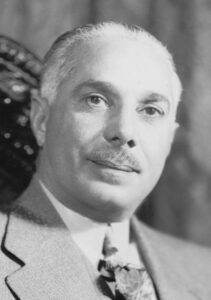
Trujillo’s government was totalitarian. Until his assassination, no group, or individual, was allowed to express an opinion against the dictator. No other political party was able to exist during his reign, which lasted over thirty years. All citizens were to hang a sign in their houses saying: “In this place, Trujillo is the national symbol” to show subordination by the people. If you did not have this sign hung somewhere in your house, you could face terrible consequences of harassment, torture, or even imprisonment. During this time, Dominicans felt his terror, and the control Trujillo had over the country was unlimited.2
Many individuals were against his government, but they kept quiet for a long time. But four women stood out. They were four sisters, who became known as a symbol of resistance in the Dominican Republic. Patria, Minerva, Maria Teresa, and Dedé Mirabal all strongly rebelled against this dictatorship. The fourth sister, Dedé, did not participate in the fighting because she was too young, but she was integral to keeping the story of these women alive. It all started when Trujillo developed a strong interest in Minerva, whom he had previously seen in a school play on a visit the dictator made to her hometown in Ojo de Agua. But his desire to get his pleasure from Minerva would be something that would bring a lot of trouble for him.3
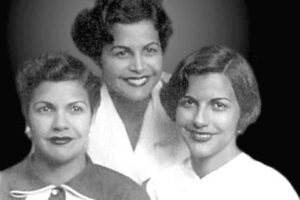
On October 12, 1949, Trujillo, who was 59 years old, held a party to commemorate Columbus’ Discovery of the Americas in his mansion located in San Cristobal. The Mirabal family was personally invited to attend. At this party, Trujillo had the plan of bedding Minerva, who was 23 at that time, but because of her revolutionary ideals, she rejected Trujillo, something few women had ever done. Under the cover of a storm, the Mirabal family left the party unnoticed. A few days later, the father of the Mirabal family was imprisoned and extremely hurt. The rest of the family, deeply affected by this event and wishing to take action, sent an apology letter to Trujillo. He then ended up releasing the father, just for him to die a few days later.4
Humiliation was another way for Trujillo to get revenge on Minerva. Minerva wanted to go to law school, and therefore, she needed to ask permission from Trujillo to be able to study law. The permission was granted. But Trujillo prohibited her from enrolling in her second year of law school in 1953 unless she gave a public speech praising the dictator’s virtues. In 1954, during law school, she met her future husband Manolo Tavarez Justo, the founder of the anti-Trujillista movement, which had the main goal of overthrowing Trujillo’s government. After graduating Summa Cum Laude and top of her class in 1957, she found herself not being able to practice law since the dictator denied her a license to practice law. This was his way of revenge.5
On June 14, 1959, a group of Dominican exiles supported by the Cuban government attempted to overthrow Trujillo’s dictatorship. This attempt was ultimately unsuccessful because Trujillo’s agents knew beforehand. Eventually, all the people who were part of it were captured, brutally tortured, and later, murdered. Consequently, out of solidarity with their fallen compatriots, the domestic campaign adopted the name “Fourteenth of June Movement.”6
Trujillo had a scary military service called SIM (Servicio de Inteligencia Militar), and anyone who would rebel against him was denounced and taken prisoner. Most of the members were tortured and killed. He had a terror policy and a special prison called “La Cuarenta” (40), where many people were tortured and taken there for weeks. Most of the prisoners just disappeared, were killed, and their bodies would be found in plain sight or buried in deserted places.7
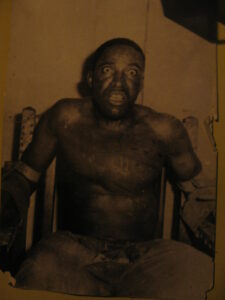
It was possible that the Mirabal Sisters could face the same fate. Minerva and Maria Teresa were strong activists against the dictator who were motivated to end the dictatorship and institute a democratic country, and they were willing to give their lives for the cause. The sisters would hide ammunition and weapons in their houses and even give shelter and food to those who were being chased by the SIM. Despite the possible consequences, they were courageous to do this for their country.8
After a failed attempt to assassinate Trujillo, and since Trujillo had spies all over the country, Minerva and Maria Teresa ended up being imprisoned because of their actions, along with their sisters’ husbands, who were actively against Trujillo as well. Despite being the only one who was not in jail, Patria still found creative ways to communicate with them during their time in prison. Later, Trujillo, scared of losing the support of the US government and the Catholic Church, released Minerva and Maria Teresa. But they kept supporting the revolutionary movement with even more strength.9
On November 2, 1960, society’s anger over Trujillo could not be more evident, when Trujillo decided to make a statement. At that time, he said he had only two problems left: the Catholic Church who were against his torture methods, and the Mirabal sisters who were actively participating in the revolutionary movement and he was aware of.10
A few months later, on November 25, 1960, the three sisters and their driver Rufino de la Cruz were on their way to visit Maria Teresa and Minerva’s husbands in jail. Despite her husband not being in jail, Patria decided to go for moral support with her sisters. On their way back home, they were stopped by Trujillo’s workers. The sisters were separated and strangled to death. Their bodies later were gathered and put in the Jeep and were run off a cliff to make it look like an accident.11
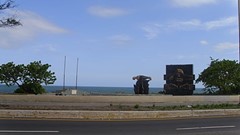
For society, it was clear that it was not an accident as they made it look, which caused anger even among the military forces who were Trujillo’s strongest allies. So, on May 30, 1961, six men assassinated the dictator who was on his way to his mansion in San Cristobal. Seven men, including those who were close to him in the army, plotted against him and successfully carried out his assassination. Trujillo’s followers made sure the people involved in this crime were persecuted and tortured, except two.12
After their death, Dedé Mirabal, the fourth sister, was in charge of taking care of her nieces and her nephews. She raised them to know how brave their parents had been during the hard times of Trujillo’s dictatorship. Dedé Mirabal dedicated her time to commemorate all the hard work her sisters did, and helped in contributing a book about their lives titled In the Time of the Butterflies by Julia Alvarez, which was published in 2000.13
This crime against the Mirabal Sisters was not only because they participated in the revolutionary movement, but also because the sisters defied how a woman was supposed to behave under his power. This is why their deaths are marked as the International Day of No Violence Against Women, something “Las Mariposas” will always be remembered for. After enduring nearly three decades of tyranny, the people of the Dominican Republic could declare that they had at last found their voice.14
- Nancy Robinson, “Women’s Political Participation in the Dominican Republic: The Case of the Mirabal Sisters,” Caribbean Quarterly 52, no. 2/3 (2006): 176. ↵
- Howard J. Wiarda, “Dictatorship and Development: The Trujillo Regime and Its Implications,” The Southwestern Social Science Quarterly 48, no. 4 (1968): 549. ↵
- Jynessa Mendoza, “To be a woman: Gender and the death of the Mirabal Sisters,” Oscillations: A Journal of Exploratory Research and Analysis (2017): 52, https://www.csustan.edu/sites/default/files/2022-11/oscillations_fulldocument.pdf. ↵
- Jynessa Mendoza, “To be a woman: Gender and the death of the Mirabal Sisters,” Oscillations: A Journal of Exploratory Research and Analysis (2017): 53, https://www.csustan.edu/sites/default/files/2022-11/oscillations_fulldocument.pdf. ↵
- Nancy Robinson, “Women’s Political Participation in the Dominican Republic: The Case of the Mirabal Sisters,” Caribbean Quarterly 52, no. 2/3 (2006): 177. ↵
- Manuel Figueredo, “Dominican Activists Challenge Rafael Trujillo’s Dictatorship (Fourteenth of June Movement), 1959-1960 | Global Nonviolent Action Database,” November 24, 2011, https://nvdatabase.swarthmore.edu/content/dominican-activists-challenge-rafael-trujillo-s-dictatorship-fourteenth-june-movement-1959-1. ↵
- “Human Identification of Skeletal Remains in Missing Persons During Trujillo’s Dictatorial Regime in the Dominican Republic – ISHI News,” accessed March 30, 2024, https://www.ishinews.com/human-identification-of-skeletal-remains-in-missing-persons-during-trujillos-dictatorial-regime-in-the-dominican-republic/. ↵
- Jynessa Mendoza, “To be a woman: Gender and the death of the Mirabal Sisters,” Oscillations: A Journal of Exploratory Research and Analysis (2017): 52, https://www.csustan.edu/sites/default/files/2022-11/oscillations_fulldocument.pdf. ↵
- Nancy Robinson, “Women’s Political Participation in the Dominican Republic: The Case of the Mirabal Sisters,” Caribbean Quarterly 52, no. 2/3 (2006): 178-179. ↵
- Nancy P. Robinson, “Origins of the International Day for the Elimination of Violence against Women: The Caribbean Contribution,” Caribbean Studies 34, no. 2 (2006): 153. ↵
- Who Were Las Mariposas, and Why Were They Murdered? – Lisa Krause, 2021, https://www.youtube.com/watch?v=1e7bhUjUEJ8. ↵
- Elizabeth Manley, “Intimate Violations: Women and the ‘Ajusticiamiento’ of Dictator Rafael Trujillo, 1944—1961,” The Americas 69, no. 1 (2012): 93. ↵
- Courtney Andrews, “How the Murder of the Mirabal Sisters Ignited an International Movement to End Violence Against Women and Girls – UAB Institute for Human Rights Blog,” December 9, 2022, https://sites.uab.edu/humanrights/2022/12/09/how-the-murder-of-the-mirabal-sisters-ignited-an-international-movement-to-end-violence-against-women-and-girls/. ↵
- Ali White, “The Mirabal Sisters- a History of International Day for the Elimination of Violence Against Women,” Welsh Women’s Aid, November 25, 2020, https://welshwomensaid.org.uk/news/the-mirabal-sisters-a-history-of-international-day-for-the-elimination-of-violence-against-women/. ↵
